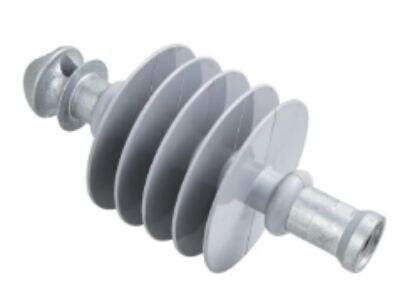Hey there, kids. So today we want to discuss a very relevant and interesting topic – composite insulators. Sounds tricky, but definitely not. We will analyse it and get very easy for you to see you understand. Let’s get started.
Composite insulators: what are they?
So, first of all, what are Composite insulators? Perhaps you have actually heard about insulators. Insulators are materials that do not allow electricity to flow through them easily. They are vital because they protect electricity to prevent it from becoming a danger and to contain it. So composite insulators are a particular class of insulator. They contain a mixture of materials such as fiberglass, silicone rubber, and porcelain. These materials form a sturdy insulator that is also reliable. These composite insulators are essential for supporting and protecting transmission lines and power systems. They ensure we get the reliable electricity we have today.
Why Composite Insulators Are the Future
You may think, why do we need composite insulators since we do have normal ones? Well, let me tell you. Composite insulators are the next generation electrical components. In many ways, they are far superior to ordinary insulators. For instance, they have more strength and durability. They are made to handle all sorts of catastrophic weather, like high winds, heavy rain, and even earthquakes. This is crucial because we expect our electrical systems to remain functional regardless of any outside condition. Composite insulators don’t crack or break easily, so they don’t just cost less to fix over time — they also last for many years.
Advantages of Composite Insulators in Electric Grids
What are some the benefits of composite insulators in electrical networks? There are quite a few. For one thing, they’re orders of magnitude safer than typical insulators. Since they aren’t so easily broken, the odds of fires and accidents are less likely to occur. This is crucial for ensuring everyone's safety.” The composite insulators are much lighter than regular insulators. That makes them far easier to install and move around in the field when workers are setting up electrical systems. Fewer repairs mean a potential reduction in lifetime costs too – since composite insulators require less maintenance. Doing so saves money for businesses and communities so it can be used for other essential areas.
Supporting Electrical Grids with Composite Insulators
Effects of Composite Insulators composite insulators also support a lot of enhancements in electrical grids. And one of the main advantages is they are more resource-efficient. That means they waste less energy and are capable of transmitting more power from point to point without loss. That’s really cool. They're also helping reduce power outages, since they fail less often. In such cases, people are able to enjoy uninterrupted power supply in their homes and educational institutions. And here's another big reason: Since composite insulators can withstand extreme weather conditions, they are ideal for any areas with a harsh climate or rugged terrain. This means that our electricity will continue to flow without interference even in the most extreme conditions.
Composite Insulators in Power Transmission: An Overview
Sound like: From now on, let's take care of composite insulators, which make a common and vital part of the power systems we depend on every day. They are more durable, longer-lasting, and safer than conventional insulators. They also help save money in the long run and provide better quality electrical grids, and that benefits us all. We take great pride at THIM having high quality composite insulators for our customers. We believe technology can and should be used for good and composite insulators are a perfect example of how innovation can improve the world. Thanks for learning with us today, and we hope to see you next time for more fun facts and cool information.














































